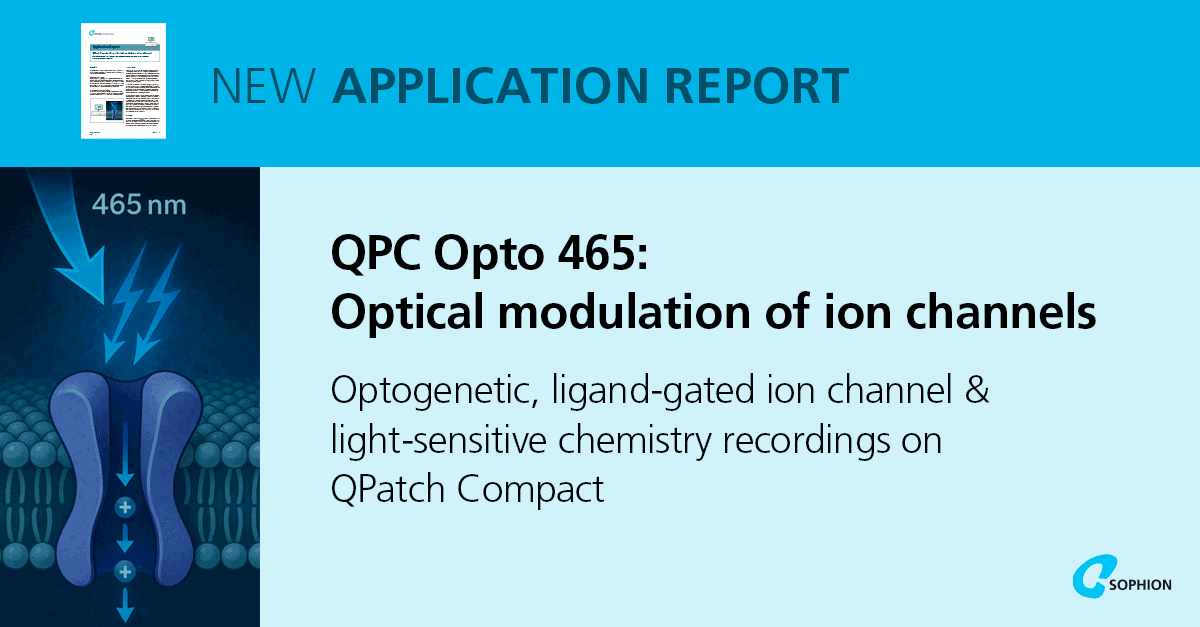
New Application Report reveals how Sophion's QPC Opto 465 enables optogenetic control: From photostimulation to pharmacology
Using optogenetically modified cells expressing Channelrhodopsin-2 (ChR2), we demonstrate that the QPatch Compact Opto 465 system enables precise recording of light-activated currents, achieving reliable control and measurement of ion channel activity for advanced neurophysiological and pharmacological studies.
QPatch Compact Optogenetics – optical control meets semi-automated patch clamp
Combining light and electrophysiology brings temporal precision that chemical tools alone cannot match. QPC Opto 465 integrates an LED-based illumination path with a semi-automated patch clamp platform to record light-evoked ion channel activity and photo-released ligands. This application report describes two use cases that show the system’s utility for basic research and early drug discovery.
Optogenetic activation of Channelrhodopsin-2
Using a stable ChR2/HEK-293 cell line, we recorded robust, intensity-dependent inward currents at a holding potential of -90 mV. Sequential increases in LED output (10, 20, 40, and 100%) produced graded increases in current amplitude consistent with the ChR2 photocycle. The QPC Opto 465 system enabled rapid, repeatable stimulation and reliable quantification of light sensitivity and dynamic range, supporting experiments that require precise control over stimulus timing and intensity..
Quantifying photoactivated ligand (Rubi-GABA) responses with QPC Opto 465
Photoactivation of caged neurotransmitters offers a way to deliver a defined chemical stimulus with millisecond precision. In cells expressing GABAA (α5β3γ2), 100 µM Rubi-GABA was photo-released with 1 s pulses of 465 nm light at multiple intensities. The increasing light intensities produced dose-dependent GABA responses, showing that the QPC Opto 465 system can quantify pharmacology driven by photo-released ligands.
Reducing variability and increasing throughput in optogenetic and photochemical assays
Integrating optical control into the semi-automated patch clamp workflow reduces experiment-to-experiment variability and increases throughput for optogenetic and photochemistry experiments. Typical applications include mechanistic studies of light-gated proteins, screening of photoswitchable compounds, and target validation in neurological drug discovery.
For representative traces, intensity-response curves and detailed methods, download the full application report and explore how QPatch Compact Opto can accelerate your ion channel research via optogenetic and photochemistry assays.
